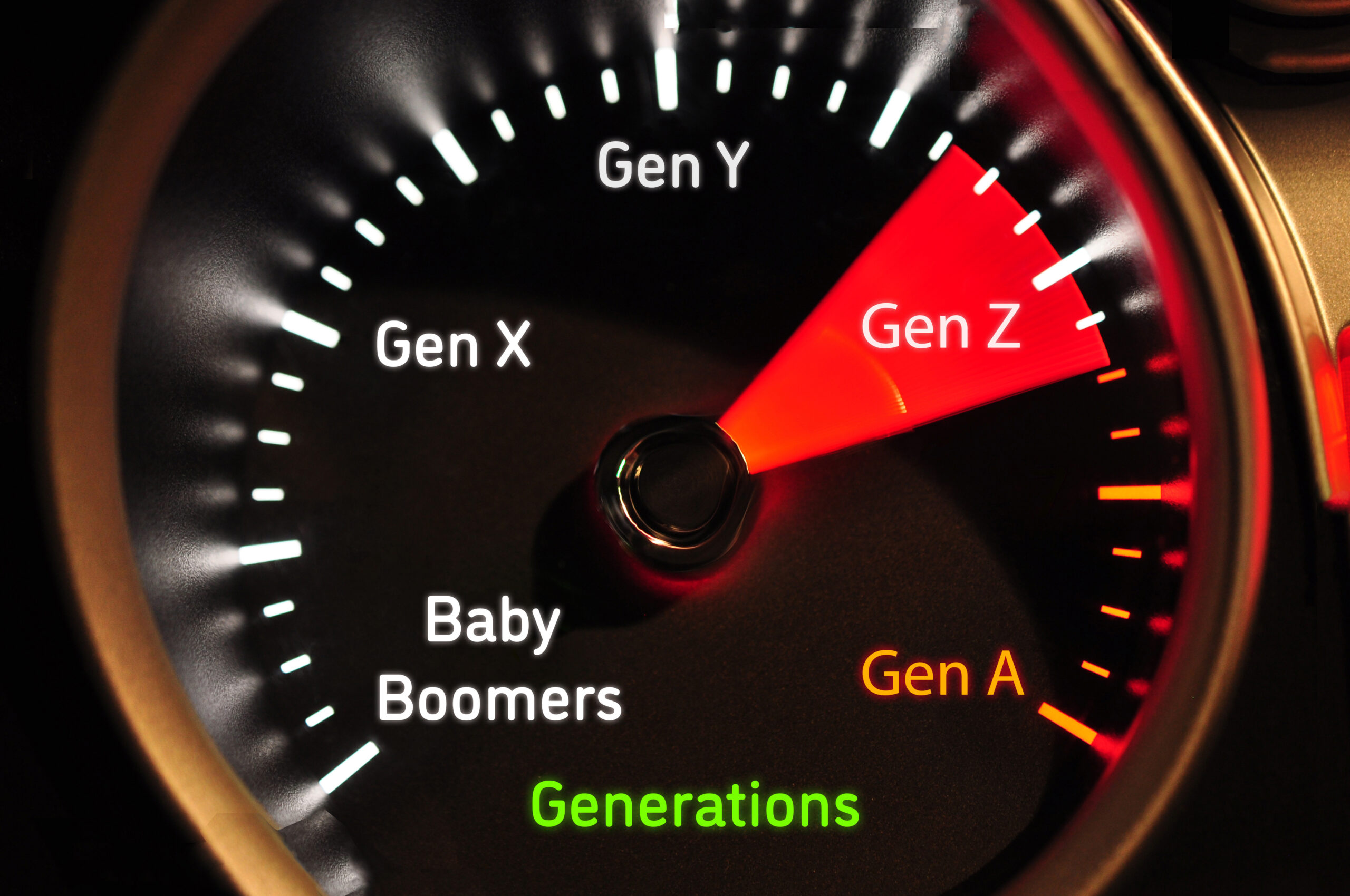
Understanding Generational Preferences for Effective Targeting
Categories:
A BAI report illuminates the potential for growth and success in understanding generational preferences regarding loyalty to their primary financial institution (PFI). The data underscores the crucial role in attracting new account holders. While challenging, this insight presents a significant opportunity for financial institutions (FIs).
Crafting successful marketing strategies hinges on understanding generational preferences.
Each generation—from Millennials to Gen Z, Gen X, and Baby Boomers—has distinct priorities. But, what is each generation looking for?
Low fees consistently emerge as a top priority across generations, but it’s not the only factor.
- Gen X and Baby Boomers place a high value on convenience and reputation.
- Millennials are drawn to cash incentive rewards and financial education.
- Gen Z (Zoomer) values easy and seamless digital banking capabilities.
Branch and ATM Locations vs Apps
Baby Boomers and Gen X highly prefer banking with an FI with a branch or ATM conveniently located near them.
Gen Z especially appreciates that their FI has accessible technology so that they do not have to jump from one mobile app to another. Zoomers who have switched PFI in the last 12 months say they switched to get products and features that were more mobile-centric.
However, despite heavy reliance on digital banking, Gen Z still finds brick-and-mortar bank branches important for the ‘peace of mind’ they offer.
Rewards, services, and digital offerings
Baby Boomers control over half (51.8%) of the total wealth in the US, and place an important value on FIs that offer high-yield money market accounts, wealth management or investment advice, and estate/trust management. Boomers also often send money transfers, so having peer-to-peer (P2P) payment options, such as Zelle, is essential for them, with 26% saying they used digital payment apps like Zelle two to five times a week.
Millennials, on the other hand, value cash incentive rates and tools and services that help them create and monitor their budgets. 67% of bank account holders between 18 and 24 said they were most interested in banking with FIs that offer these tools and services. To drive the point further, 58% of those surveyed said they wanted their FI to recommend products or services to help with financial planning.
However, financial services are not the only thing that draws Millennials in. Cash incentives and rewards matter, too, with 80% saying they would be willing to switch FIs for better rewards. In addition, 94% of Millennials prioritize a no-fee banking offer.

The facts clearly show how each generation has its own preferences. If FIs cater to those preferences, they’re less likely to lose current account holders and attract new ones. Marketing plays a crucial role here. It’s about ensuring your FI stays top-of-mind when people consider switching. For instance, if someone spots a tempting offer from your FI – like a cash incentive to open an account or a competitive rate – it might prompt them to switch.
Looking forward
By 2030 in the US, Millennials and Gen Z are expected to inherit $68 Trillion from their Baby Boomer parents. This transfer of wealth presents a significant opportunity for FIs to attract and retain younger customers by offering tailored products and services that meet their evolving needs.
Targeted marketing makes it easy to focus on specific generations, however, overlooking the broader demographic landscape can be a missed opportunity. Rebranding your FI to fit the next generations can make your existing customer base feel alienated or forgotten.
Don’t forget to address the needs of existing account holders
Baby Boomers and Gen X are regularly overlooked as targeted audiences. However, the Baby Boomer generations hold over half the U.S. wealth, $78.1 trillion. In an ever-demanding economy, recognizing the vast potential of diverse demographics is not just strategic but imperative for sustainable growth and market relevance.
In order to stay relevant and at the top of mind, FIs must create comprehensive account acquisition strategies that target each generation separately.
Consumer attitudes towards community banks and credit unions
Taking a look at the average age of Credit Union members highlights the importance of having a diverse range of account holders from different generations. The average age of a credit union member is 53, indicating a potential risk if you don’t attract younger members for sustained growth.
As account holders age, a steady stream of younger account holders must come in to ensure stable account growth. If this does not happen, it can potentially devastate income stability issues for FIs. According to a survey, millennials and Gen Z are less likely to bank with credit unions than national and/or online banks.
Gen Z (Zoomers)
- 26% are credit union members
- 36% opt for national banks
Millennials
- 14% are credit union members
- 28 % prefer national banks
- 31% prefer online banking
One reason that Millennials and Gen Z don’t consider community financial institutes is historically FIs have not created marketing campaigns that resonate with Millennials and Gen Z. Millennials and Gen Z are not aware of community banks and credit unions as an option because they have had less exposure to their advertising.
Generational Preferences on Account Types
The younger generations are important for account acquisition because of the stability they bring and their large population size. Considering that Millennials and Gen Z will comprise 72% of the global workforce by 2029, understanding what types of deposit accounts, digital technology, and loan offers will attract these generations is essential for staying relevant in the long term. A report by bai.org reveals that the majority of Gen X – Gen Z open deposit accounts online, while Baby Boomers prefer face-to-face interaction at a branch.
| Boomers | Gen X | Millennials | Gen Z |
| 31% | 61 % | 79% | 63% |
Generational data indicates that low-interest fees often motivate account holders to switch their PFIs. However, it’s crucial to recognize that this isn’t the sole motivating factor behind switches. For instance, 75% of Millennials would switch their primary financial services organization for a better mobile app. At the same time, Gen X is the only generation that lists “Best Rates” as the #1 reason they would choose a PFI.
A comprehensive marketing strategy should encompass all potential reasons account holders might consider switching PFIs, not just the prevalent ones. Narrowing focus on a single aspect limits your marketing efforts’ effectiveness. Using marketing analytics to pinpoint which account offerings are valued by each generation can help you find overlapping preferences, creating a solid marketing strategy that targets multiple generations at once in a relevant way.
Cash incentive rewards significantly influence Gen X and Boomers when considering PFI switches. Factors such as a positive reputation and the convenience of ATM locations play pivotal roles, particularly for Gen Z and Millennials. Instead of casting a large net and only promoting one offering, you can pair offerings together to simultaneously hit multiple target account holders.
Conclusion
There are many reasons why people want to switch PFIs. Employ an acquisition strategy that leverages these factors and catches their attention, ensuring they are already familiar with your institution when making a switch. Tempting offers, such as cash incentives to open an account or competitive rates, can prompt individuals to change. FIs must tailor their offerings and marketing efforts to attract and retain account holders across generations.
Watch our on-demand webinar, “Maximizing Market Share and Checking Accounts“ to gain useful insights to grow core deposits and strengthen your competitive position.
Or watch our latest on-demand webinar, “Let’s Get Digital: Strategies to Acquire New Accounts!“
ADVANTAGE is a leading provider of consultation services for credit unions and community banks. With a 40-year history of excellence, we are helping clients implement innovative marketing strategies to grow market share and achieve their strategic plans. To learn more, contact your local representative or call us at 800-809-2307.





